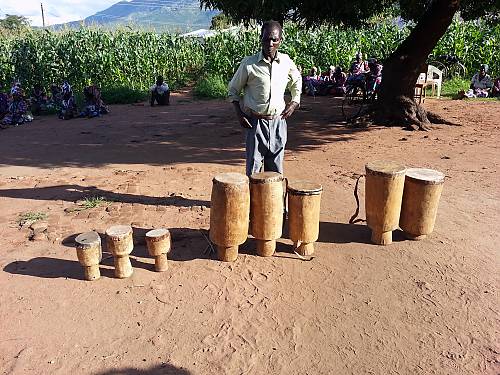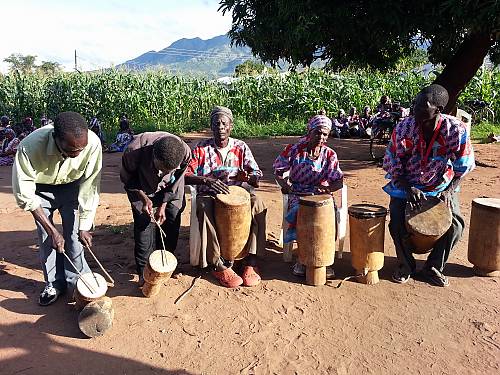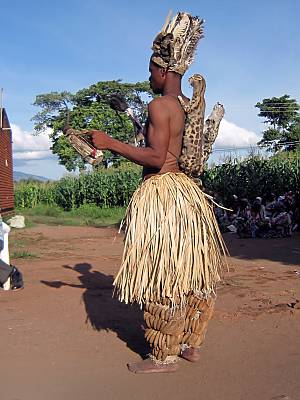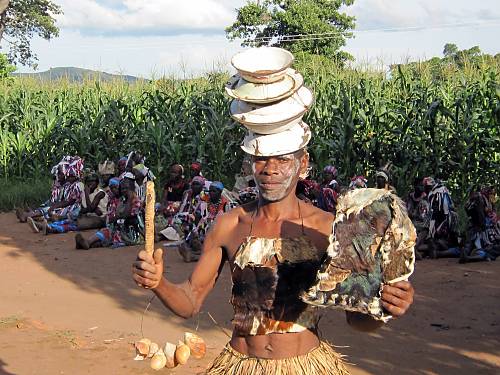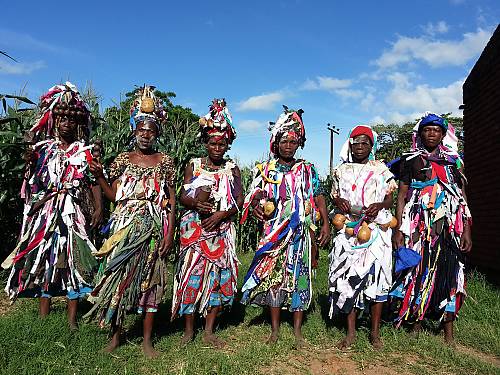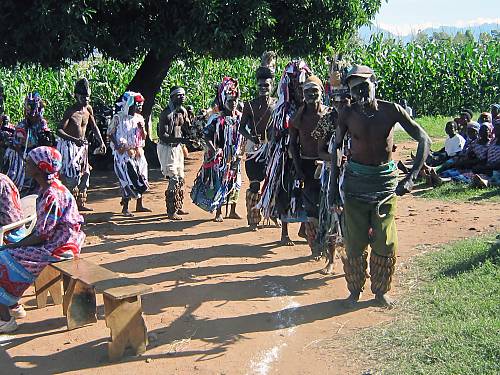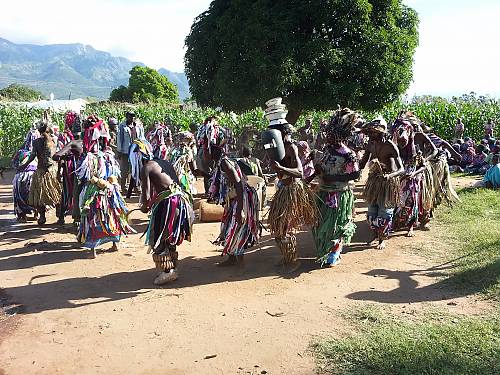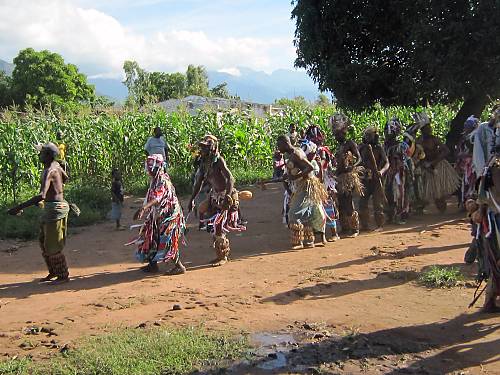Tchopa, sacrificial dance of the Lhomwe people of southern Malawi
Inscribed in 2014 (9.COM) on the Representative List of the Intangible Cultural Heritage of Humanity

Tchopa is a performing art practised among Lhomwe communities in southern Malawi. The dance is usually performed during celebrations after good harvests and successful hunting trips and during offerings to ancestral spirits after calamities such as droughts and outbreaks of disease. Tchopa entails knowledge of particular dancing skills and singing, and employs three different sizes of drums. Twenty to thirty dancers perform in a circle while criss-crossing each other. Some dancers carry packs on their backs holding farming tools, animal skins, puppets, hunting gear and old kitchen utensils. Each village headman has a small group of Tchopa dancers. Although primarily performed by older Lhomwe men and women, who function as the bearers and practitioners and principal custodians, Tchopa is now also increasingly performed by children. Knowledge and skills for the dance are transmitted during practice sessions and occasional performances. Other key roles among the group include the makers of dancing costumes and drums, drummers, whistlers and dancers. Tchopa dance strengthens social cohesion among Lhomwe communities with members providing mutual support in times of need, such as during ill health and bereavement, and coming to the assistance of overburdened practitioners by providing communal labour in the field.
